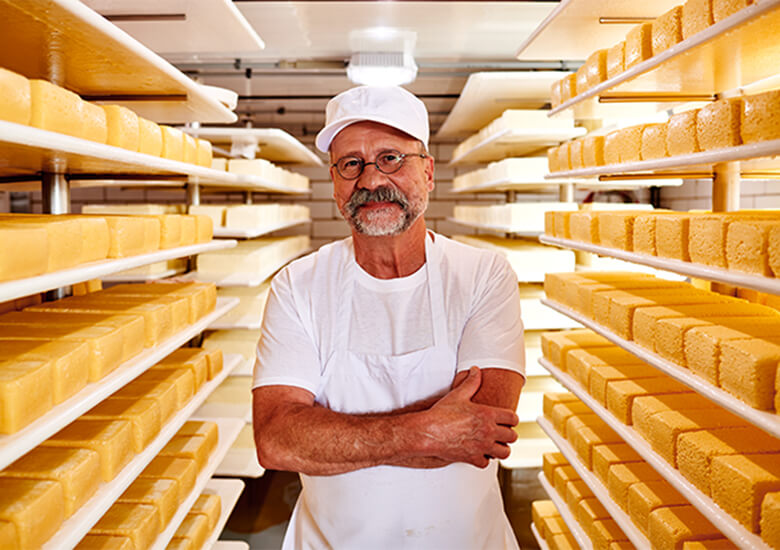Exploring Melbourne Made Cheese: Why Floridia Cheese Is a Must-Try
Exploring Melbourne Made Cheese: Why Floridia Cheese Is a Must-Try
Blog Article
Opening the Keys of Artisanal Cheese Making: A Step-by-Step Do It Yourself Overview
In the realm of culinary workmanship, artisanal cheese making stands as a testament to the delicate balance in between practice and development. Each action in the procedure, from selecting the best milk to developing aging techniques, holds within it a riches of understanding gave via generations. As we start this journey to debunk the art of developing exquisite cheeses, we are confronted with a tapestry of keys and skills waiting to be deciphered. Join us as we check out the details of this old craft, where art, science, and persistence merge to generate tastes that entice the detects.
Selecting the Right Milk
When beginning on the journey of artisanal cheese production, the choice of milk plays a critical function in identifying the top quality and qualities of the last product. The kind of milk selected influences the flavor, texture, and on the whole profile of the cheese.
Furthermore, the resource of the milk, whether from cows, goats, lamb, or buffalo, contributes unique tastes and features to the cheese. Each type of milk brings its own nuances, enabling for a vast array of cheese varieties to be crafted based on the selected milk.
Culturing and Coagulating
To start the cheese-making procedure, the crucial steps of culturing and coagulating must be thoroughly carried out to change milk right into curds and whey. Culturing includes presenting valuable microorganisms to the milk, which after that starts the fermentation procedure. These microorganisms transform lactose (milk sugar) right into lactic acid, producing the acidic atmosphere needed for coagulation. The sort of culture utilized can substantially affect the flavor, texture, and ripening of the last cheese product.

The timing and temperature level control during culturing and coagulation are critical variables that influence the final result of the cheese. Correct execution of these actions is important to guarantee the wanted structure, flavor, and uniformity of the artisanal cheese being produced.
Draining Pipes and Pushing Curds
After the milk healthy proteins have coagulated and the curds have actually been reduced view website to release whey, the following important action in artisanal cheese making includes draining pipes and pressing the curds to accomplish the desired structure and uniformity of the last cheese product. Draining pipes find here is the process of dividing the curds from the whey. This can be done by transferring the curds into a cheesecloth-lined bowl-shaped sieve or mold and permitting the whey to drain off normally. The moment for draining can differ relying on the kind of cheese being made and the wanted moisture material.
Pushing aids eliminate any kind of continuing to be whey and compacts the curds to create a strong cheese wheel. Correct draining pipes and pushing are important steps that considerably affect the quality and qualities of the artisanal cheese being produced.
Aging and Flavoring Strategies
Executing thorough aging and flavor techniques is essential in boosting the depth and intricacy of artisanal cheeses, elevating their taste accounts to charming levels of improvement and class. Aging plays a vital function in establishing the special flavors and appearances that differentiate artisanal cheeses.
Seasoning methods also contribute dramatically to the final preference of artisanal cheeses. Cheesemakers might pick to introduce extra flavors by including ingredients such as herbs, spices, or even fruits right into the cheese during the production process. In addition, some cheeses are cleaned or rubbed with different fluids, such as brine or alcohol, to improve their structures and flavors.
Wrapping and Keeping Cheeses

Final Thought
In verdict, grasping the art of artisanal cheese making involves thoroughly choosing the appropriate milk, adhering to accurate culturing and coagulating processes, draining pipes and pushing curds effectively, and utilizing numerous aging and flavor techniques. Keep in mind to wrap and store your cheeses effectively to ensure optimum taste and structure growth.
Each type of milk brings its own subtleties, enabling for a wide range of cheese ranges to be crafted based on the picked milk.After the milk proteins have coagulated and the curds have actually been reduced to learn this here now launch whey, the following vital action in artisanal cheese making involves draining pipes and pressing the curds to achieve the preferred appearance and consistency of the final cheese item. A lot of cheeses must be covered in wax paper or cheese paper to enable them to breathe while protecting them from drying out. For cheeses that need to continue aging, such as bloomy peels or washed skins, guarantee they are stored in a trendy atmosphere like a cheese cave or a fridge established to the proper temperature. By paying attention to the covering and storage space of artisanal cheeses, cheese manufacturers and fanatics can maintain the stability of these delicacies and fully enjoy their intricate tastes.
Report this page